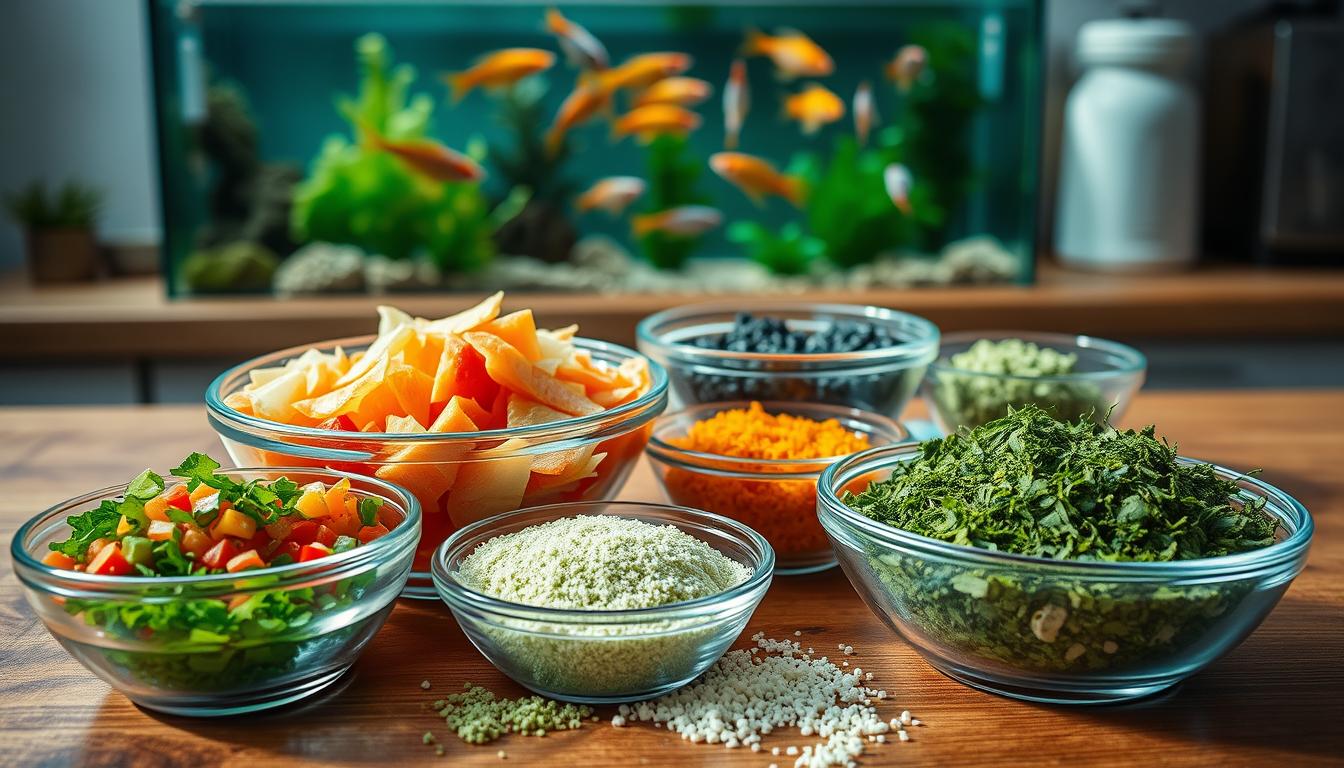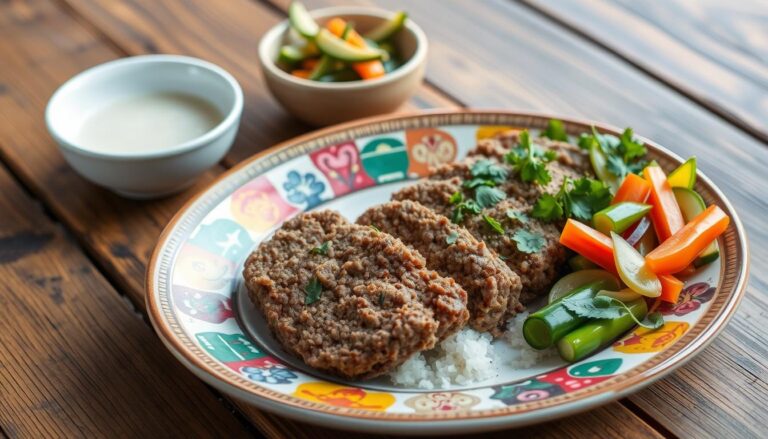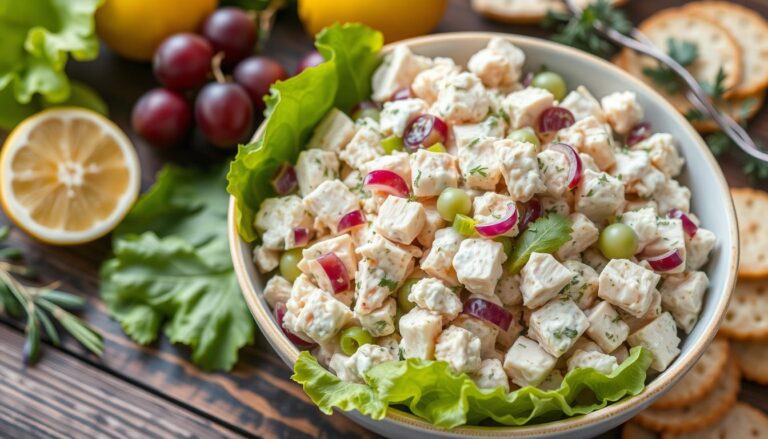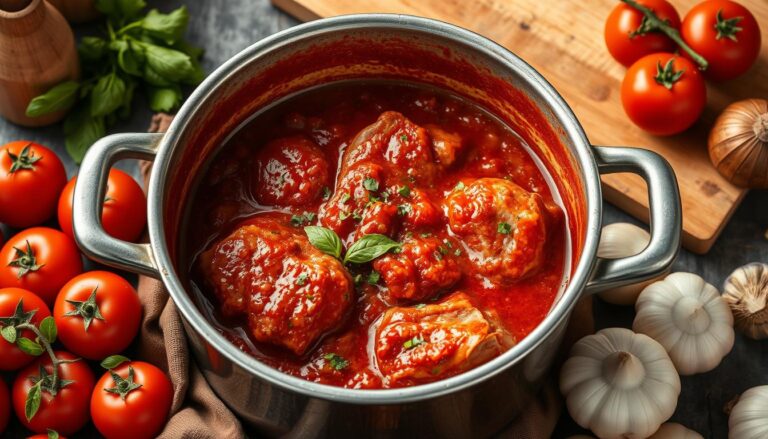Easy Homemade Fish Food Recipe: Feed Your Aquarium Pets
As an aquarium hobbyist, I know how crucial a good diet is for your fish. Commercial fish food recipe is easy, but making your own has its perks. It saves money and lets you pick the ingredients, ensuring your fish get the best nutrition.
Key Takeaways
- Homemade fish food offers a cost-effective and nutritious alternative to commercial options.
- Making your own fish food allows you to control the ingredients for a balanced diet.
- Homemade fish food reduces the environmental impact compared to store-bought options.
- The recipe is simple and customizable for different fish species.
- Homemade fish food is easy to prepare, taking only 15 minutes.
Benefits of Making Your Own Fish Food
Making your own fish food has many benefits. It’s cost-effective and nutritious, tailored to your fish’s needs. This supports a balanced diet and helps the environment.
One key advantage is controlling the ingredients. Store-bought foods often have fillers and preservatives. Homemade food uses fresh, whole ingredients, giving your fish the nutrients they need.
Another plus is saving money. Buying pre-made fish food can be expensive, especially for big tanks. Making your own food cuts down on costs, making it a cost-effective choice.
Homemade fish food is also better for the planet. Using fresh, local ingredients and less packaging reduces waste. This makes your aquarium hobby more sustainable.
“Making your own fish food allows you to provide a balanced, nutritious diet tailored to your fish’s specific needs, while also being more cost-effective and environmentally friendly.”
Whether you’re new or experienced in aquarium keeping, making your own fish food is a great idea. It lets you choose the ingredients and tailor the food to your fish’s tastes. This ensures they get a balanced diet that keeps them healthy and happy.
Essential Ingredients for Your Fish Food Recipe
Making homemade fish food needs the right ingredients. You need protein sources, plant-based parts, and binders. These are key for your fish’s health.
Protein Sources
Fish meal and shrimp meal are great for protein. Fish meal comes from whole fish, giving amino acids. Shrimp meal is rich in omega-3s, good for muscles and health.
Plant-Based Components
Adding spirulina and veggies brings vitamins and minerals. Spirulina is packed with nutrients. Carrots, peas, or spinach add variety and balance to your fish’s diet.
Binding Agents
Gelatin is a good binder for homemade fish food. It keeps the food together and adds protein. Cornstarch or wheat flour also work well, making the food easy to handle.
Choosing the right ingredients makes a healthy and tasty fish food. Your fish will stay happy and healthy in their tank.
Required Tools and Equipment
Making your own fish food at home needs a few key tools. A good blender or food processor is essential for mixing ingredients. You’ll also need measuring cups and spoons for exact amounts. A sharp knife and cutting board help with chopping fresh ingredients.
To dry and shape the fish food, a dehydrator or a low-heat oven is useful. Keep the finished food in airtight containers like mason jars or Tupperware. Don’t forget gloves and a mask for safety when working with powdery ingredients.
| Tool or Equipment | Purpose |
|---|---|
| Blender or Food Processor | Grinding and mixing ingredients |
| Measuring Cups and Spoons | Precise measurements of ingredients |
| Cutting Board and Knife | Chopping and preparing fresh ingredients |
| Dehydrator or Oven | Drying and forming fish food |
| Airtight Containers | Storing and preserving the finished fish food |
| Gloves and Mask | Safety equipment for handling powdery or dusty ingredients |
With these tools, you’re ready to make tasty, healthy fish food for your aquarium. Your fish will thank you.
Understanding Fish Nutrition Basics
It’s key to give your aquarium fish a balanced diet for their health. They need a mix of protein, vitamins, and minerals for growth and repair. Knowing what each fish species needs helps you make food that’s just right for them.
Protein Requirements
Protein is crucial for fish, helping them grow and repair tissues. The amount of protein they need depends on their species, age, and how active they are. For example, herbivorous fish like Surgeonfish need less protein, while carnivorous ones like Worms need more.
Essential Vitamins and Minerals
Vitamins and minerals are vital for fish health. They help with bone growth, metabolism, and keeping the immune system strong. Important ones include vitamin A, vitamin C, vitamin E, calcium, and phosphorus. Mixing plant and animal ingredients in their food ensures they get all they need.
| Nutrient | Function | Good Sources |
|---|---|---|
| Protein | Growth, tissue repair, and muscle maintenance | Fish meal, shrimp, krill, spirulina |
| Vitamin A | Eye health, immune function, and skin/fin development | Carrot, spinach, sweet potato |
| Vitamin C | Stress response, wound healing, and immune function | Citrus fruits, bell peppers, broccoli |
| Calcium | Bone growth and development, and shell formation | Seaweed, shrimp, and crushed coral/shells |
Knowing what your fish need for a balanced diet lets you make food that’s good for them. This helps them stay healthy and happy in your aquarium.
Step-by-Step Fish Food Recipe
Make a tasty and healthy homemade fish food with this simple recipe. By making your own fish food, you can give your fish a diet that meets their needs. Here’s how to do it:
- Start by mixing fish flakes, ground oats, and spirulina powder in a 2:1:1 ratio.
- Add a bit of water to the mix and knead it until it feels like dough.
- Roll out the dough to about 1/4-inch thick.
- Cut the dough into small pieces, using a knife or cookie cutters.
- Place the pieces on a dehydrator tray or a baking sheet lined with parchment paper.
- Dehydrate the pieces in a dehydrator or bake them in a low-temperature oven (around 135°F) for 4-6 hours.
- Once they’re dry and crunchy, put them in an airtight container. Store them in the fridge for up to two weeks.
This recipe lets you choose the ingredients based on your fish’s needs. You can pick the right proteins, plants, and binders for a balanced meal. This way, you can make a meal that your fish will love.
| Fish Species | Recommended Protein Sources | Preferred Plant-Based Components |
|---|---|---|
| Goldfish | Fish flakes, spirulina powder | Ground oats, brown rice |
| Tropical Fish | Fish flakes, shrimp powder | Spirulina powder, green peas |
| Cichlids | Fish meal, krill powder | Quinoa, sweet potatoes |
By following this DIY fish food recipe, you can give your fish a nutritious and tasty meal. Enjoy making your own fish food and taking great care of your pets.
Storage and Preservation Methods
Keeping your homemade fish food fresh is key. To make sure your fish get the best nutrition, follow these storage tips.
Freezing Guidelines
Freezing is a great way to keep your fish food fresh longer. Here are some tips for freezing:
- Use airtight, freezer-safe containers or bags to prevent freezer burn and air exposure.
- Portion the food into individual servings to make it easier to thaw and use as needed.
- Freeze the food at a temperature of 0°F or below for optimal preservation.
- Most fish food can be frozen for 4-6 months, but oily fish like salmon and trout should only be frozen for up to 3 months.
Shelf Life Information
When storing your homemade fish food at room temperature, remember these shelf life guidelines:
| Food Item | Refrigerator (40°F or below) | Freezer (0°F or below) |
|---|---|---|
| Fresh Fish and Shellfish | 3-4 days | 4-6 months |
| Home-Canned Fish | 1 year | N/A |
| Commercially Canned Fish (Tuna, Sardines) | 5 years | N/A |
Watch for signs of spoilage like discoloration, off-odors, or mold. Proper storage keeps your fish food fresh and nutritious.
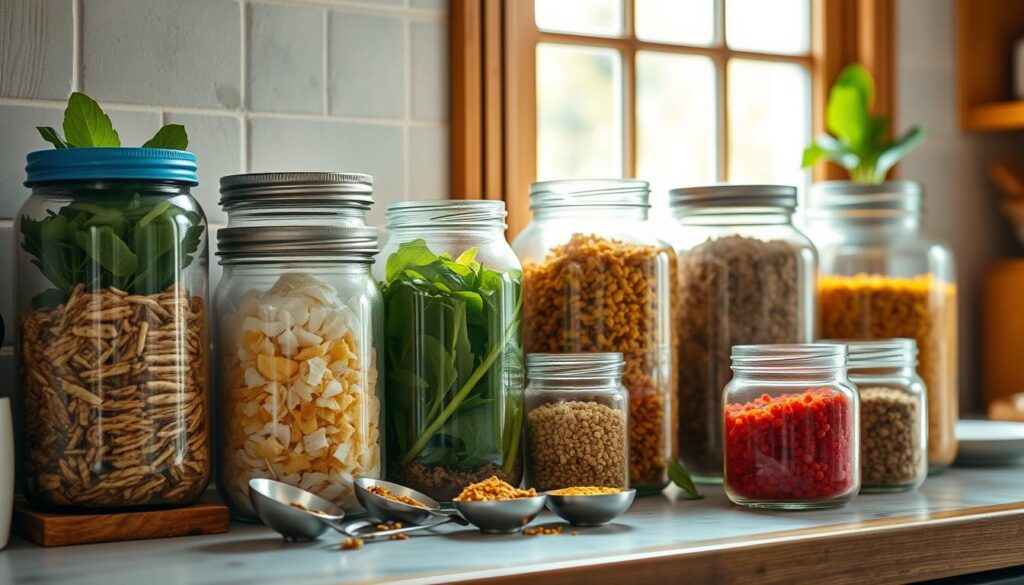
Recipe Variations for Different Fish Species
Preparing homemade fish food is key to your fish’s health. Each fish species has its own diet needs. Tailoring your recipe to meet these needs ensures your fish get the best nutrition.
For herbivorous fish like platies, mollies, and guppies, add more plants to their food. Use more vegetables, spirulina, and other plant proteins. This meets their plant-eating needs.
Carnivorous fish, such as bettas, angelfish, and discus, need more protein. Increase the animal protein in their food. Add shrimp, squid, or fish meal to their diet.
| Fish Species | Dietary Needs | Recommended Recipe Adjustments |
|---|---|---|
| Herbivorous Fish (Platies, Mollies, Guppies) | Primarily plant-based diet | Increase proportion of vegetables, spirulina, and plant-based proteins |
| Carnivorous Fish (Bettas, Angelfish, Discus) | High protein diet | Add more animal-based protein sources like shrimp, squid, or fish meal |
Customizing your fish food recipe for each species is crucial. It ensures your fish get the nutrients they need. This approach helps your fish grow strong and healthy in your aquarium.
Tips for Successful Fish Food Preparation
Making homemade fish food is rewarding but needs careful attention. To give your fish a balanced diet, steer clear of common mistakes. Also, use quality control steps to ensure their food is good.
Common Mistakes to Avoid
Keeping the right nutritional balance is key. Choose ingredients and recipes that fit your fish’s needs. Don’t overfeed, as it can harm water quality. Adjust food amounts based on your fish’s age and size.
Storing fish food wrong is another mistake. It should be kept cool and dry to stay fresh. Follow freezing tips and check expiration dates to keep food safe and healthy for your fish.
Quality Control Measures
- Choose fresh, high-quality ingredients that match your fish’s nutritional needs.
- Keep food prep clean to avoid contamination.
- Check the food’s texture, color, and smell to meet your standards.
- Test the food’s nutritional balance often and adjust as needed.
- Adjust food amounts based on your fish’s age, size, and activity level to avoid overfeeding.
By avoiding mistakes and using quality control, you can make sure your homemade fish food is fish food quality, nutritional balance, and food preparation tips your fish need to do well.
Conclusion
Making your own fish food has many benefits for aquarium lovers. It helps you understand what your fish need to stay healthy. You can also save money and control what goes into their food.
This method is good for the planet too. You can use eco-friendly ingredients and cut down on waste. It’s a great way to care for your fish, whether you’re new or experienced.
Learning to make fish food yourself saves money and meets your fish’s needs. It makes your aquarium care more personal and rewarding. You’ll get to know your fish better and enjoy a lively aquarium.

